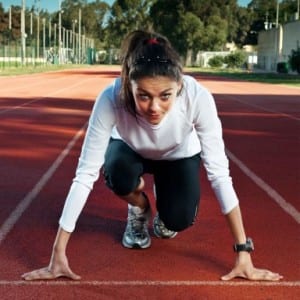Sprinters lift their knees higher before driving their foot down, like a hammer striking a nail, says Clark.
Shape magazine reporter Amanda MacMillan has covered the research of SMU researcher Ken Clark, a doctoral student and researcher in the SMU Locomotor Performance Laboratory. The lab and research are under the direction of SMU biomechanics expert Peter G. Weyand, associate professor of applied physiology and biomechanics.
Clark’s and Weyand’s new research found that the world’s fastest sprinters have unique gait features that account for their ability to achieve fast speeds.



 Booming mobile-health app market needs robust FDA oversight to ensure consumer safety, confidence
Booming mobile-health app market needs robust FDA oversight to ensure consumer safety, confidence